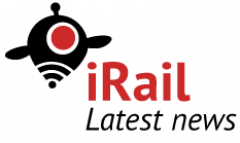#iSoc12 Kot@Gent – from the ashes rises a new app
Hello everyone, I’m Thomas and I’m part of the team responsible for the Kot@Gent application (formerly team Circadia). Together with Michael, we’ve been working quite a lot on this app since I was only able to attend #iSoc12 for the last week (of the total three week period). Because of this, Michael was focusing on another app while I was gone (GF12 app which has been quite a success, so props to him and Miet for building this in such a short amount of time).
If you’ve read Michael’s rather novel-like blogpost, you’ve probably come to the realization that, in a nutshell, #iSoc12 is pretty damn awesome. It’s filled to the brim with like-minded individuals who are passionate about creating apps that have added value in some way or another. It’s precisely because of this reason that Michael and I, after much consideration, decided to dump the idea of Circadia and find a new idea for an app (you can read all this process in Michael’s blog post). A new idea was born: Kot@Gent!
Our objective was to build an app for Kot@Gent which would enable users to see which “kots” (kot = student housing) were available in their direct vicinity, shown on a map overlay. Users would be able to take one look at the map, click on a marker for more information and decide which ones are suitable for them. We’ve added some extra features such as marking a certain kot as your favorite, which would enable you to quickly find it at a later time. Also included in the app is a feature to make notes for yourself for each kot which are saved locally. We think this is an extremely handy feature for when you visit a kot and want to make personal notes (such as: no basement, water leaking in bathroom, great interior, …).
The process for making this application was a pretty standard one, although our development period was reduced to one week instead of three. First, we had to come up with the idea (thanks for #Code9000 for helping with that!). Next, we had to think about what features we wanted to include for the users, and see which data was available. When we determined our features, we started working on the wireframes and interaction flows — how would the app roughly look (which info goes where, where do we place the buttons, …) and feel (when you go to this link, which window should pop up, …?). After that we started coding the core features: our project is done entirely in HTML5 and JavaScript.
One issue we ran into while coding was that the data we were provided with turned out to be insufficient: the data only had addresses (like Keizer Karelstraat 1) and not a geolocation (such as 51.052678, 3.732659). We couldn’t geocode all these addresses at once, since any geocoding service limits the requests you can send per minute (as well they should, to protect their servers from exploding). This meant that we had to convert the addresses ourselves and enter them into the data source we used for our app. When this issue was solved, all other core features were coded rather easily — this is only logical since geolocation data are the heart of our app (without geolocation data you can’t plot anything on a map).
The final step was the design: we chose for a notebook-ish look, which the users (students) would easily connect to. It’s their personal notebook to take with them when looking for a kot!
Finally, I’d like to thank iRail (especially Pieter and Yeri) and the city of Ghent for giving us the possibility to participate. I’m sure everyone here loved every minute, and wouldn’t mind doing this again any time soon. All in all, I’ve had a great time here at #iSoc12, even though I was only able to attend it for one week instead of the planned three week period. I hope I’ll be invited to participate next time, too!

